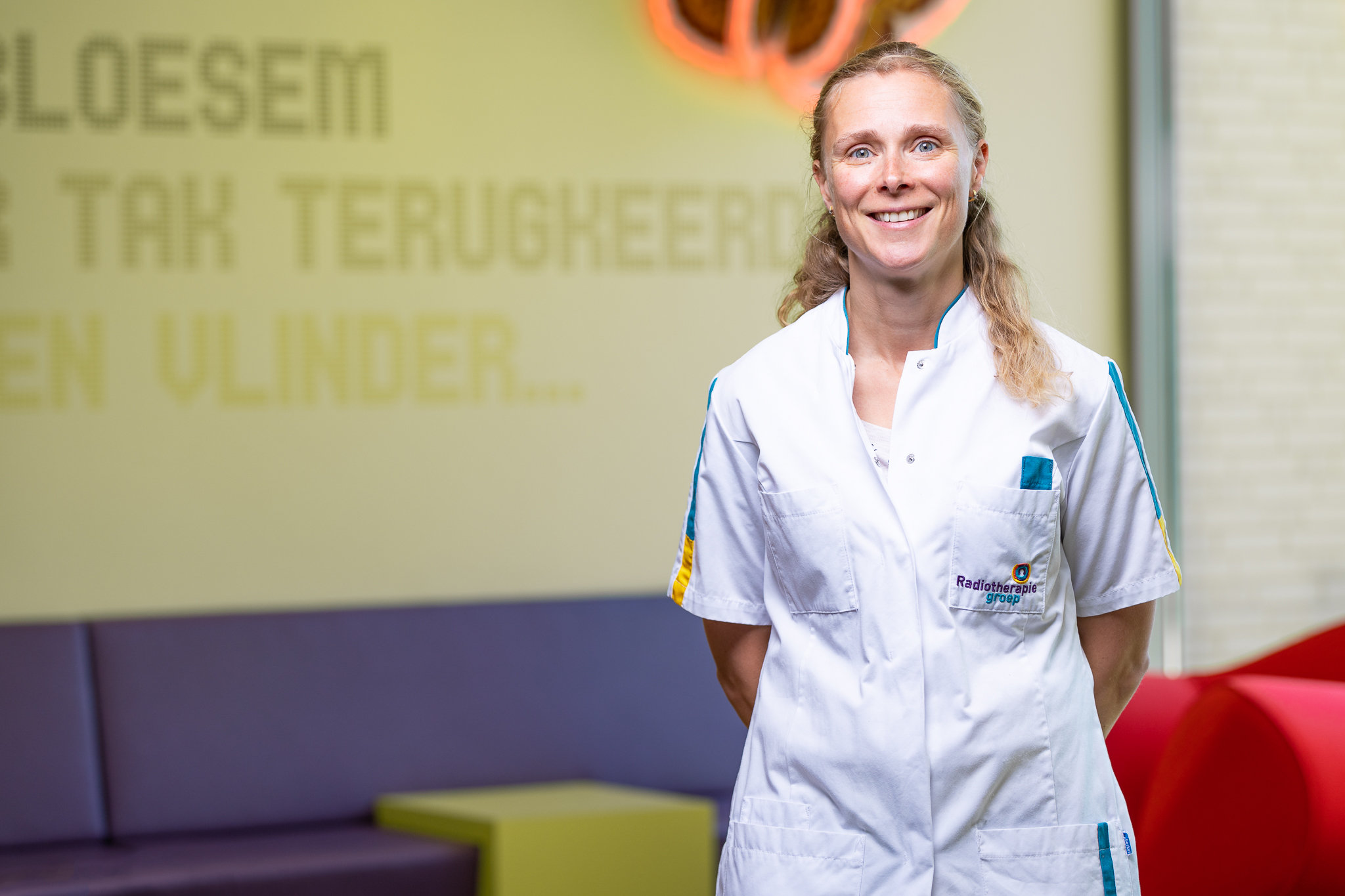Radiation oncologist Dorien Haverkort reflects on six months of using HiX
It's been six months since Dutch radiotherapy clinic Radiotherapiegroep went live with HiX, yet radiation oncologist Dorien Haverkort still notices the benefits of the EHR every single day. In the days before HiX, much of Haverkort's time would be wasted on repetitive actions. Now, work processes are faster, more efficient, and more secure. One such process is that of clinical noting, where diagnoses are used to generate complete care pathways.
"For breast cancer patients, I always have to register the exact same CT instructions, such as marking the chest and the scar. This information is now entered automatically in HiX", says Haverkort. "The same goes for when I select a curative procedure for a patient with lung cancer; HiX automatically suggests 'contrast', which is what I would select for 98% of patients. Such small things add up to save a lot of time."

HiX greatly expedites the radiation oncologists in their tasks. "Registrations take less time and can be re-used", Haverkort continues. "I can use predefined templates for my treatment plans, which allow me to enter the treatment of a patient in the patient record with only a single mouse click. The treatment will automatically include variable data, such as side effects. It's a game changer."
Secured work processes
Another area in which HiX brings great improvement is that of security, says Haverkort. "HiX communicates directly with our radiation system, which means that manual copying errors are a thing of the past: whatever I prescribe and register in HiX is what will be sent to the scheduling system. A feature that will be implemented shortly is a double check for prescriptions. That will remove any risk of accidentally prescribing a dose of, say, '20 x 3', instead of '30 x 2'."
"Once you enter the care level and diagnosis, you can quickly and easily formulate the appropriate treatment plan and plan any necessary actions", she continues. "HiX' innovative clinical noting system uses the diagnosis to automatically offer matching orders for things like appointments, physical therapy, and medications. The orders that are suggested depend on the diagnosis and are marked by small golden circles, but they can easily be adjusted by our department. This means that I'll be offered different suggestions for breast cancer patients than for a gynaecological patient; HiX may suggest a referral to a massage therapist to combat lymphedema for the former patient, but a referral to a pelvic physiotherapist for the latter."
Enthusiasm on the workplace
Haverkort is not the only one who recognises the benefits of the intelligent IT solution. "All of my colleagues see the improvements and are enthusiastic about the possibilities, even though there are some issues that still need to be resolved. We've only had a taste of what the system can offer. That's the great thing about switching to such an advanced EHR: you quickly get used to the improvements. You start to think of how it can benefit nearly every process and you expect these to be automated. It's easy to forget we had to do all of that manually not too long ago."
The professionals at Radiotherapiegroep notice the impact of their new system the most in the workplace, but patients also reap the benefits from behind their PC, tablet, or smartphone. Haverkort: "Through our online patient portal, patients are able to view and reschedule their appointments. We see that more and more patients are using the portal. Although we do not yet make use of the portal's full potential, we do use it to offer electronic consultations and make treatment information available to our patients. Soon we'll also start offering questionnaires to patients with prostate cancer. These would previously be sent to the patients by mail. If this new workflow turns out well it would be an increase in efficiency, and would also benefit the environment."
Continuous development through user groups
Haverkort joins forces with colleagues from various healthcare institutions to help improve HiX by participating in a so-called content user group. Content user groups are made up of specialised healthcare professionals from different fields, who continuously work on and brainstorm about three topics that would benefit their work processes if implemented in HiX. Once they reach a consensus on a topic and HiX is updated accordingly, the topic is crossed off the list and they move on to the next one.
Haverkort: "Currently I'm participating in two of the three topics: one is a dashboard that lets you view and monitor the radiation procedures and prioritisation of all patients in the preparatory phase, and the other concerns a feature focusing on toxicity and the registration of complications during a procedure. We are able to discuss ideas and input from all over the country, and propose a feature to ChipSoft. Then we can discuss ways in which this feature may be implemented in HiX."
User groups are an essential contribution to the development of HiX. "Although I've only attended two meetings", Haverkort continues, "I feel that we, collectively, can help create wonderful features, additions that would really benefit us and our work. That's a real source of energy for me. I'm curious and excited to see how ChipSoft is able to transfer our ideas into reality, and I'm grateful to be a part of that. In the end, we're doing this for the benefit of all healthcare professionals."
A major step forward
So far, Haverkort is very pleased with all that HiX has to offer. "I guess it's human nature to always want more and better, but it's good to see the system is constantly improving. We've already taken a major step forwards in the way we work, with some great solutions offered by HiX. The built-in tumour classification, part of the oncological patient history, is another one of those features that will truly benefit any oncology department. This feature allows us to discretely record many data points, which we are then able to view in the patient's health record. All of the important data regarding a tumour, from a radiological standpoint, is available in one place."
"The past six months have been fruitful and have made it clear that Radiotherapiegroep and ChipSoft are on the same page", says Haverkort in conclusion. "By being able to standardise and automate work processes, we greatly improved our workflow. Now it's up to us and ChipSoft to get even more out of HiX. It's clear that it has much more to offer."


